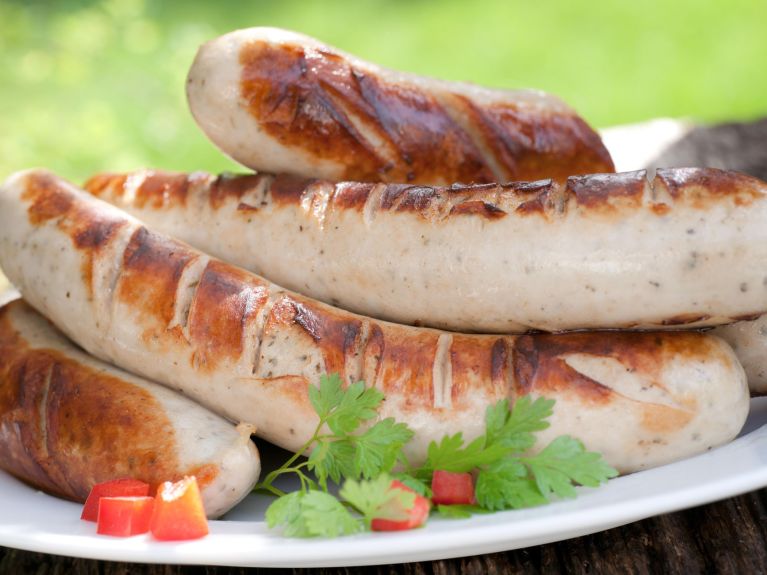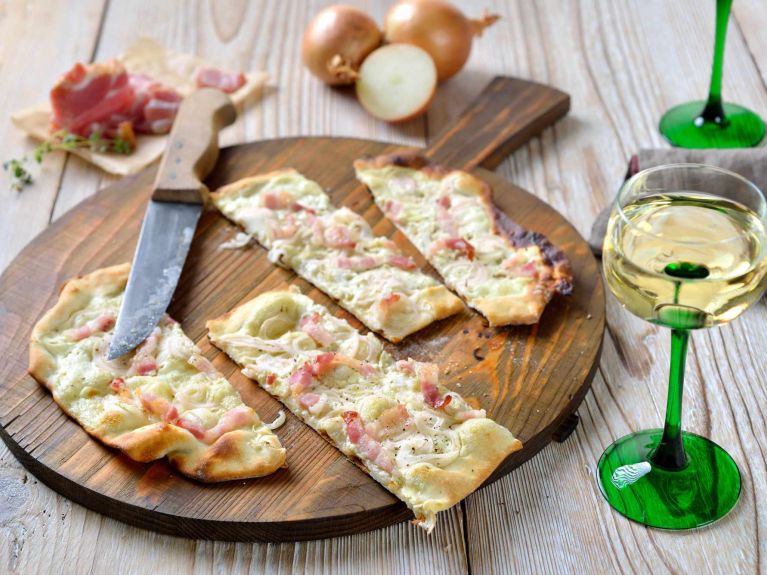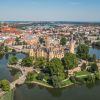A culinary journey
What do people from Schleswig-Holstein, Thuringia or Rhineland-Palatinate eat? Typical dishes that were created under the influence of neighbouring countries.

Typically German? Not when it comes to food. The different landscapes in Germany, each with its own unique ingredients, shape the dishes in north and south, east and west, just as much as the influence of the respective neighbouring countries - and with almost 3,900 kilometres of national borders, quite a few influences come together. Three examples.
Sweet and sour Schleswig-Holstein
One flavour unites many dishes in Schleswig-Holstein; it is what is called here in the far north Brooken Sööt, broken sweetness. This refers to the combination of spicy fish or meat dishes with sweet side dishes, which is also common in Scandinavian countries: green beans and bacon are accompanied by sweet cooked pears; blood sausage soup is often seasoned with onions, pepper, bay leaf, cloves and a little sugar. The traditional sailor's dish Labskaus is a mishmash of potatoes, salted meat and beetroot, garnished with fried egg, rollmops, gherkins and apple – the whole seasoned with sugar, pepper and nutmeg. And with the sweet Meelbüdel, a flour dumpling with milk, sultanas and cardamom, comes boiled sausage and pork jowl alongside compote.

Thuringia: meat and potatoes
Rostbratwurst (grilled sausage) and potato dumplings are the specialities of Thuringian cuisine, and that's no big surprise in this region, so rich in forests and fields. Traditionally, meat with a potato side dish is a favourite here. But when it comes to making these classics, Thuringians are very precise: the dumplings are made of one-third overcooked potatoes and two-thirds grated raw potatoes. And only medium-fine, 15 to 20-centimetre-long sausages in natural casings can be called "Original Thüringen Rostbratwurst". They are a bit more latitudinarian about the seasoning - depending on the region in Thuringia, caraway, marjoram or garlic are added.

French-Rhenish advances in Rhineland-Palatinate
What is celebrated today as fusion cuisine has a long tradition in Rhineland-Palatinate: here, two different food cultures have been mingling since time immemorial. On the one hand, the rather coarse, meat-heavy Rhineland cuisine with dishes such as Saumagen, pig’s stomach traditionally stuffed with pork, potatoes, onions and fried sausage. On the other hand, the finer French cuisine from neighbouring Alsace; the tarte flambée in particular has also long been a standard in the neighbouring German region. And Rhineland-Palatinate is the German front-runner when it comes to wine: of the 13 German wine-growing regions, six are located here in the southwest. The slopes of the Moselle, Saar and Ruwer rivers produce wines that are among the best and most expensive in the world today.



